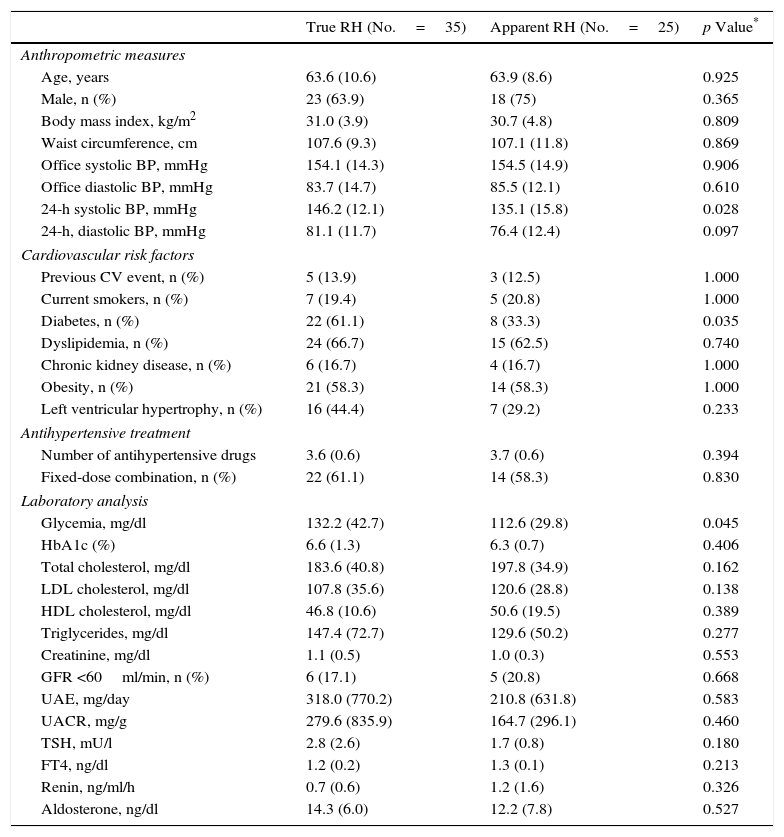Resistant hypertension (RH) has been defined as failure to control office blood pressure (BP) despite the use of ≥3 different antihypertensive agents at optimal doses, including, ideally, a diuretic. Apparent RH, defines patients with an incorrect diagnosis of RH due to different causes. The objective was to determine whether most patients with RH in fact have apparent but not true RH.
Patients and methodsObservational study involving 93 patients with suspected RH, being 60 patients finally included. Screening for secondary causes of hypertension was performed. True RH was defined as office BP>140/90mmHg despite full doses of 3 antihypertensive drugs including a diuretic.
ResultsMean age 63.7±9.8years, 68.3%were male. Office BP 154.3±14.4/84.4±13.7mmHg. Of the 60 patients, 23.3% had white coat effect, 3.3% did not have a diuretic and 8.3% were non-adherent-to-treatment. Accordingly, 58.3% were classified as true RH. Spironolactone was added in 62.5% of patients of whom 78.4% achieved ambulatory BP control.
DiscussionAlmost half of the patients with suspected RH were not really true RH. We provide more evidence of excess of fluid retention as an underlying cause of lack of BP control in patients with RH, reinforce the relevant paper of spironolactone for the management in those patients.
La hipertensión resistente (HR) se ha definido como la falta de control de la presión arterial (PA) a pesar de la administración de≥3 fármacos antihipertensivos a dosis óptimas, incluyendo, idealmente, un diurético. La HR aparente se define por un diagnóstico incorrecto de HR, debido a diferentes causas. El objetivo fue determinar si la mayoría de los pacientes con sospecha de HR tienen HR verdadera o HR aparente.
Pacientes y métodosEstudio observacional que incluyó a 93 pacientes con sospecha de HR, siendo finalmente incluidos 60. Se realizó el cribado de causas secundarias de hipertensión. La HR verdadera se definió como PA>140/90mmHg a pesar del tratamiento con dosis completas de 3 fármacos antihipertensivos incluyendo un diurético tiazídico.
ResultadosEdad media 63,7±9,8años, el 68,3% varones. PA clínica 154,3±14,4/84,4±13,7mmHg. De los 60 pacientes, el 23,3% tenía efecto bata blanca, el 3,3% no recibía diurético y el 8,3% no era adherente al tratamiento. El 58,3% de los pacientes se clasificaron como HR verdadera. Se añadió espironolactona en el 62,5% de los pacientes, alcanzando el 78,4% el control ambulatorio de la PA.
DiscusiónCasi la mitad de los pacientes con sospecha de HR, realmente no lo son. El estudio proporciona mayor evidencia sobre el exceso de retención de líquido como causa subyacente de la falta de control de la PA en pacientes con HR, reforzando el relevante papel de la espironolactona en el manejo de estos pacientes.








